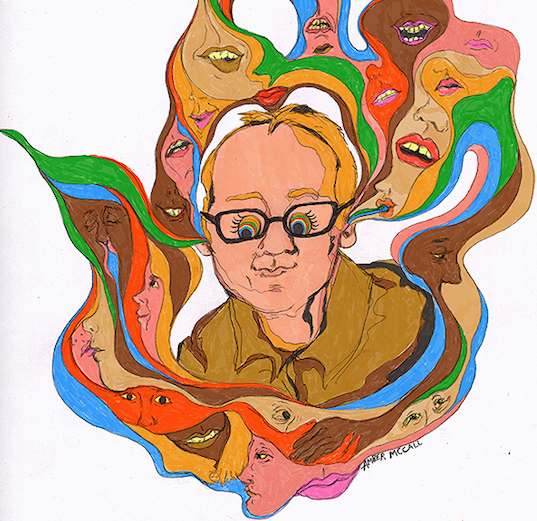The Government of Canada,
has been accepting proposals from the public on how to promote global science excellence. This is a subject of interest to me; I co-signed
a submission from NRC researchers on the subject, and have been reading the other submissions.
I spent several hours today reading the suggestions and the supplementary material provided by many of the contributors. This post summarizes and comments on some of those other submissions.
Administration and OversightI think it is a common observatiuon that the previous government over-managed science, much to the detriment of science. Numerous contributions pointed to this:
-
Trevor Charles points to the dissonance between leadership and practitioners in the sciences. "From my perspective, the main reasons for the desperation are 1) stagnated support for basic research, 2) attempts to force innovation by ineffective and obstructive industry co-funding requirements, and 3) futile efforts to predict the areas in which breakthroughs will occur."
- The Agricultural Institute of Canada recommends "the reduction of the administrative burden preventing researchers from participating in high-impact research projects."
-
66 NRC researchers suggest (PDF) "conditions that provide them the freedom to use their expertise and knowledge, including their awareness of the important issues in their scientific fields, related industries, and society at large."
- The Professional Institute of the Public Service of Canada (PDF) writes "Overly restrictive communications policies imposed by the previous government muzzled government science" and "research staff of the National Research Council (NRC), have seen their inventiveness blunted through the imposition of poor project management and the loss of independence."
- To address the delay between funding application and funding, Darren Lawless suggests we "create a funding program that allows post-secondary institutions to apply for a fixed funding envelope over a specified time frame that could then be redistributed to fund eligible projects."
There is also a desire, though, to make sure that the scientific community doesn't run away with itself. People want oversight, and they want to ensure we get a return on our substantial investment.
-
Tim Harford says "We cannot insist that scientists ought to be accountable only to themselves."
But is the role of government to micromanage research? Some contributors thought the government's perspective should be loftier, setting out a grand vision or national challenge.
-
Wayne Robert says we need to create a Canadian dream to stimulate our interest. "These things drive innovation at home and create a sense of pride and unity."
- In a similar vein, Alfred Pratt suggests we try to attract a large science project to Canada. "Something similar to the Large Hadron Collider at CERN."Researchers might point to TRIUMF, though, which already exists (see below).
By and large, though, I think that people found that most of the problems in oversight stemmed from the overseers, and they called for more stability and perspective, instead of going for the quick fix.
-
Ron Rogge advocates for constancy in government policy. "One can fathom the impact an ill-informed, inappropriately-motivated decision can make on the country’s standing in global science excellence. A capacity that has taken tens of person-years to develop can be quickly lost, and to rebuild will take a much greater investment than the cost of retention."
-
Tanya Roussy says we should stop trying to buy talent and instead try to develop it. "We have plenty of bright people right here in Canada; who, with the right support, will be the superstar scientists of tomorrow - if we start to remove the barriers to their success."
Rene Sugar recommends that research be funded independently of Parliament.
The last suggestion might be a bit over the top. But it does tap into the idea that the increased government oversight of recent years hasn't been helpful, and people are looking for alternatives.
Private Sector and Industry InputPeople outside the sector (or who feel they are outside the sector) want a say.
- Decisions about research funding should have more industry input, say some. For example, the CCentre for Excellence In Mining Innovation recommends "ensure broader participation by suitably qualified private sector representatives on grant application review boards" because "Right now, they’re dominated by academics."
- The Council of Canadian Innovators argues "Colleges and universities need to continue to consult with Canada’s scale-up community when designing their programs to ensure that the needs of the current and evolving labour market are being me.
-
Polytechnics Canada (PDF) calls for "this consultation is to be inclusive and to allow Canada’s polytechnics and colleges to make their optimal contribution to increasing Canada’s innovation impact."
This is a double-edged sword. On the one hand, it is always valuable to get more input - the contributions to this consultation are themselves evidence of that. On the other hand, if more input means more oversight, then it runs the risk of compounding an already difficult problem.
A lot of what follows below addresses the role of the private sector, colleges and polytechnics in scientific research in Canada.
Fund Fundamental Research There was substantial support for funding fundamental research, with proponents making it clear that without fundamental research Canada will not have any innovation capacity at all. Indeed, there was concern that fundamental research was not sufficiently address in the consultation documentation, and that insufficient attention has been paid to funding mechanisms that support foundational research.
- The Alliance des universités de recherche du Canada (ACCRU) argues "L'excellence en recherche n'a pas d'adresse...Investir dans les universités partout au pays" (research excellence is not addressed... invest in universities throughout the country.).
- The Agricultural Institute of Canada argues, "Basic (foundation/pure) research must also be considered as it is the fuel for innovation and commercial application.... The public sector must to play a leading role in providing an enabling environment for innovation and performing R&D in areas of public good, such as basic research, where the private sector has less incentive to invest."
- The Canadian Association of Physicists advocates (PDF) for continuing the NSERC Discovery Funds. "This overall model of 'unfettered funds' works well for training flexible and innovative thinkers, and should continue, at a much higher funding rate," it argues. Also, "Allow for multiple and broad-based funding avenues to support diverse activities, especially when it comes to international collaboration. One size does not fit all."
-
TRIUMF argues (PDF) for "big science" saying "Because they are built on a foundation of world-class research and education, large-scale research facilities have the expertise and capacity to grow and foster Canada’s innovation economy." It advocates "a 'needs driven' innovation program to fund research aligned with national objectives."
-
Tev Stachniak argues that diversity enables prosperity. "There are no rules to producing innovation save one: diversity enables prosperity. Frequently this is discussed in terms of the value of curiosity-driven research, where the history of innovation highlights a central role for serendipity in generating truly novel discoveries."
-
Garth Huber (PDF), Canadian Institute of Nuclear Physics, and others, argue for reform in funding mechanisms to support basic research. " As the science develops and new opportunities and ideas arise, it is important to allow researchers to pursue a diverse program of excellence in fundamental science research."
-
Roland Kuhn (PDF) re-examines NRC's mission and questions its focus on revenues. "The suggestion that DARPA’s economic impact be measured by its revenues would be considered ludicrous by any expert on R & D policy, anywhere in the world," he writes.
Foundational research is often contrasted with applied reasearch, which is discussed below, but it is important to keep some comments outlined by Roland Kuhn in mind here: "Basic research versus applied research is a false dichotomy. The range is much more graduated than that. The implication of what we were being told was that if you are not doing exactly what a client wants you to do at this moment in time then you are not doing applied research. As there are only two options, you must be doing basic, blue sky, research."
Innovation, Knowledge Translation and Applied ResearchA number of contributors made the point that while Canada is strong on basic research, it is weak in innovation, that is, in bringing basic research to market. This has been a refrain for years.
- As le Conseil d'administration de l'Association francophone pour le savoir says, "Le Canada est fort en recherche, mais faible en innovation" (Canada is stong on research, but poor at innovation).
- The Agricultural Institute of Canada argues,"the gap between Canada and the world’s top five innovation performers has widened. In the most recent World Economic Forum (WEF) Global Competitiveness Report (2014-15) Canada ranks 23rd of 140 countries in capacity for innovation, significantly below levels in the United States (3rd).
-
L'Institut professionnel de la fonction publique du Canada argues "L’économie du Canada manque d’innovation" and suggests "les scientifiques du gouvernement fédéral pourront s’engager pleinement dans l’atteinte des nouvelles priorités du pays en matière d’innovation" (government scientistscould fully commit to meeting the priorities of becoming an innovation nation).
The natural reaction has been to shift resources to support an innovation agenda. This reaction is echoed by a number of contributors.
- The Agricultural Institute of Canada argues, "An effective innovation agenda must then set medium and long-term national R&D priority areas that promote business participation. An innovative private sector is critical to translate Canada’s high-quality knowledge production into marketable products that bring productivity gains and deliver commercial solutions to various industries."
- The Office of Applied Research & Innovation Algonquin College says "there needs to be a cultural shift and a redirection of incentives to support innovation and commercialization activities."
The principle here is that research needs to be 'translated' or 'transferred' into innovation or economic development, often in specific sectors, "so that we as Canadians can extract maximum benefit from the investments that we make in research."
- So suggests the Centre for Excellence In Mining Innovation.
- And the Forest Products Association of Canada argues "greater federal support in research and development would help maximize engagement in the forest sector’s innovation agenda."
- As Rick Jeysman notes (PDF), "The Massachusetts Life Sciences Centre (MLSC) operates to carry out its MLSI mission choosing investments with a range of priorities: (1) Funding translational research that converts discoveries from Massachusetts into marketable products and services; (2) Investing in promising new technologies; (3) Building connections; and (4) Ensuring alignment of skills with needs of life sciences industries." This approach should be 'Canadianized', he says.
- The Agricultural Institute of Canada also says "Participatory research approaches bring valuable opportunities to engage science graduates in research projects and knowledge transfer (KT) activities on the ground."
- The Council of Canadian Innovators argues we should "develop policies that help our entrepreneurs commercialize ideas coming out of our universities."
Here's the problem: this is exactly what the government has done over the last decade, diverting hundreds of millions of dollars into knowledge translation, applied research, and commercialization. his has not addressed the fundamental issue: the private sector in Canada does not invest in research. And without this investment, no amount of government intervention can buy an innovation society.
Other people are looking for other solutions. Some, for example, think it's a match-making problem.
-
Steve Leach writes that we should "build a platform where new patents are examined and vetted by experts, where inventions are matched to industry needs, and where new opportunities for pure and applied research are aligned with commercial interests."
- Similarly, Emma Brown suggests we join the IN-PART platform, "a global matchmaking network that connects university technologies with companies who are actively seeking to commercialize research."
This has been attempted in the past. Maybe it can work with better technology, or maybe the problem isn't a matchmaking problem. Then there's this:
-
Sarah Diamond and Karl Vredenburg write, "Many organizations recognize the importance of innovation, but they don't know how to achieve it. The answer is design. With design thinking, Canada could innovate toward an inclusive society that brings the national values of equity and inclusive design to the international arena."
I'd love to think that this is the answer, but it once again rings of being the quick fix. I think that the answer lies elsewhere.
Transfering IP to IndustrySome people has been calling for more direct industry access to government-funded IP:
- As noted by Tim Harford, "any IP generated by government scientists stays with the Crown." He recommends we "allow Canadian companies free access to any IP generated on behalf of Canadian citizens.
- "Maximizing private sector experimenting or use of IP should be the goal," writes J.B., pointing to the barriers facing people wishing to commercialize publicly created IP.
-
Guillaume Cote supported "prestigious chairs in industrialization", saying "We need an incentive for the most creative and adaptable researchers to work with industry for a period of time, where do would not be expected to publish, but to support the development of intellectual property owned by businesses."
One of the major changes that took place at NRC not long after I joined was that a long-standing policy of encouraging researchers to create spin-offs and of rewarding them for their discoveries was discontinued. We've seen, as well, a nation-wide move on the part of universities to manage the commercialization (and retain the benefits) from researcher IP. Maybe this was a mistake.
-
Majid Jowhari argues "Universities and hospitals sometimes claim too much ownership of a discovery and as such eliminate incentives on academics, researchers and others to innovate and come up with new idea. Universities do not have the opportunities, nor the knowledge to take an idea from the lab and make it practical and execute."
- The CIHR 'Proof of Principle program' should be reinstated, says J.P. Heale, Managing Director, UBC Industry Liaison Office. It "was a unique funding opportunity for Canadian researchers to de-risk and develop their research discoveries so that they could form spin-off companies, or license the intellectual property to established companies."
Much of Canada's innovation strategy has been centred around the idea of attracting large industry (with tax benefits, access to research, and use of government IP) in the hope that they would invest here and create a cluster of supplier industries. This hasn't happened.
By contrast, if we look at
actual innovation clusters - at Silicon Valley, in Massachusetts, or even in Kitchener-Waterloo - we find that the economy develops as a result of a combination of basic research and spin-off startups. In other words, an innovation ecosystem.
Innovation Ecosystem But what
is an innovation ecosystem?
-
Steve Larter and Claude Laflamme suggest expanding our models of innovation. "We must not be too prescriptive about which models of innovation work, or key skill sets of individuals, the key is that the team overall, has the necessary ambition, energy, inspiration, focus, diversity and delivery skills combined with good internal communication."
A number of contributions described and recommended the development of aspects of an innovation ecosystem consisting of skills development, communications and networking, and access to resources.
- The Federation for the Humanities and Social Sciences says (PDF) "Investments in skill development, knowledge production and collaborative networks will help Canada build a rich and diverse innovation ecosystem."
- Additionally, an anonymous contributor recommends improving science communication. "Models of science communication exist. Canada should build upon these models to become a leader in science communication."
-
Nathalie Mousseau argues for investment in scientific and research libraries.
-
Sara Rubenfeld argues that public services employees should have better access to electronic resources that contain the most recent research and information available from around the world.
-
Gail Garland notes "one recommendation identified in OBIO's report "How Canada Should be Engaging in a $9 Trillion Dollar Health Economy" (www.obio.ca) industry CEOs indicated that for Canada to create an ecosystem for scientists to connect and compete with proposals for global participation."
-
Darren Lawless suggests "the creation of 'pop up' innovation zones within post-secondary institutions with the support of the government. These zones would build on the concept of successful maker spaces."
I think these are ideas that need to be taken more seriously. Most government investment in innovation over the last decade has consisted in funding to specific companies for for specific projects, and much less for services and facilities that support all companies or entrepreneurs. An innovation ecosystem, by contrast, resembles more an
infrastructure investment.
Some people, meanwhile, think that we need to reshape society itself.
-
J.B. calls for decreased immigration levels. But a commenter says "for research scientist positions, I know that we cannot limit our search to Canadian university graduates."
-
Sean Elliott calls on science to buy locally. "If more Canadian products are purchased, production cost per item will reduce, making our products more competitive globally (than they currently are)."
I think that most scientists would concur that nationalism and research are a poor mix.
Improve Research EfficiencyA number of respondents made recommendations that would contribute to an innovation infrastructure by increasing the efficiency of Canada's research investment. I think they have a point.
Consider openness, for example. Merely by employing more open source, by encouraging the use of open resources, and through open cooperation, we can eliminate many of the inefficiencies of Canada's innovation ecosystem.
-
CANARIE notes "research software developers spend time re-creating existing software components instead of expending their efforts on new and innovative functionality" and recommends that the Government should encourage researchers to move to more collaborative models of software development and reuse."
- Similarly, Camille O'Byrne recommends "une sorte de récompense (monétaire, ou sous forme d'accès à des formations, par exemple) pour avoir fourni du travail, du savoir et des nouvelles technologies à la Société en mettant leur(s) création(s) sous licence libre" (some sort of compensation for open source contributions to the ommunity)
-
Michael Christensen also argues that we should find a way to make Canadian science more open. "For example, publication could be in open-access (pay-to-publish rather than pay-to-read) publications, and underlying datasets could be posted online for deep-dives by other researchers.
- There is also the potential to make research data more widely available. Research Data Canada argues "it must be easy to find, access, reuse, and the data must be accompanied by sufficient descriptive information and permissions to make it useful. In other words, the data should be Open."
-
There was also a call for centralization and national coordination.
- The Total Innovation Management (TIM) Foundation (PDF) recommends "adopting and nationalizing an Innovation Management Standard" that would define a common language and process for innovation management, be employed by government departments, and inform incentive programs.
- The Agricultural Institute of Canada argues,"A stronger strategy to coordinate research priorities and strategies will reduce risk of duplication and produce efficiencies," and recommends "a knowledge transfer and translation component should be a mandatory condition for conducting research with public funds."
-
David Kennedy notes "We currently produce considerably more phD scientists annually than we can support," he writes. "Canada can build a more competitive scientific force by adjusting funding levels to train fewer scientists while at the same time employ(ing) more of them."
Again, though, attempts to create efficiencies through coordination (or standardization) create more problems than they solve. They increase the bulk of administrative overhead, create barriers to good research, cost time and money, and don't actually achieve coordination or standardization.
Public Sector-University-College-Industry CollaborationThere is traditionally a close link between colleges and industry which according to many writers should be leveraged to support the research ecosystem.
- Colleges should "have all the necessary tools to enable students to choose an entrepreneurial path right after they complete their studies," says Rui Fernandes, arguing they should be a "production line" for innovators.
I don't think anyone wants to think of their institution as a "production line". But it gets at the question of why we would find colleges - and college research - in the first place. Colleges and polytechnics argued they should get more direct access to research support themselves, as a part of their support for the innovation agenda.
I think that the government should look into ways to more effectively (and more sufficiently) fund research at colleges and polytechnics. But I don't think that the price for this funding should be close collaboration with industry. This should be decided by the colleges themselves. If colleges decided that collaboration - through, say, co-op placements (see below) - are beneficial, they should be free to proceed. But they should not be wedged into programs of dubious benefit simply for the purpose of qualifying for research money.
There were also some calls for greater research-industry collaboration in other areas.
- The DAIR Hub says "industry-academia-government cooperation is needed to develop and facilitate regional cluster"such as the Downsview Aerospace Innovation and Research (DAIR) consortium (www.dairhub.com).
-
Andre Sobolewski suggests funding industry leaders to take sabbaticals at universities. A commentator suggests funding professors to take sabbaticals in industry.
In fact, I find it a bit surprising that there weren't many more calls for this sort of collaboration. But my experience is that industry does not contribute to the consultation process through public fora such as this (I can imagine they would not like the reception they get from the public). We have to assume that there is support being expressed behind the scenes for the very substantial collaboration between industry and all aspects of Canada's research infrastructure, so much so that it probably counterbalances (and perhaps countervails) this entire consultation process. Openness on the part of government regarding the advice it receives directly from industry would go a long way toward restoring confidence in the science and innovation strategy overall.
There were some calls for improved cooperation between government and universities, which has been strained recently (because of government's focus on industry).
- The Agricultural Institute of Canada says "existing federal government funding regulations prevent public sector agricultural scientists from collaborating with university scientists" and argues "the current regulatory framework governing the interactions between academia and federal research institutions should be revised."
-
Jean-Pierre Monchalin writes, "NRC should also renew links with academia and be present internationally, while particularly researching association with scientific and technological leaders. He suggests NRC is the linkage between low-TRL research produced by universities and high-TRL research needed by industry, helping Canadian companies through 'the valley of death'.
-
TRIUMF notes (PDF) notes that while "a number of federally funded programs, such as the Natural Sciences and Engineering Research Council’s industrial partnership programs, support linkages between academia and industry in order to encourage innovation" these "are not directly accessible to large-scale research facilities."
Support Individual Innovation While most research support goes to institutions, support could also be provided to individuals.
-
Takin K writes, "you have to have a rich family to establish a business in Canada; this is Inequality at work."
-
Flemming Rasmussen asks, "how can innovations from 'citizen scientists' be included in funding and resource consideration?" Grant proposals should be allowed from all Canadians, he says.
- For example, Camille O'Byrne suggests "Le gouvernement pourrait par exemple offrir à chaque citoyen une période de deux ans pendant laquelle il/elle recevrait une allocation suffisante pour bien vivre, pour acheter du matériel, pour voyager, et qui serait consacrée à un projet innovant" (the government could for example offer to each citizen a two year period during which they would receive enough to live on, to purchase material, to travel, and could support an innovative project).O'Byrne also suggests that a universal minimum income would reduce the need to work and foster the development of innovation.
I think these are good points. Why is funding only available through institutions? How could social policy help
individuals get on their feet and do something interesting?
Moreoever, it is worth noting the barriers some individuals face within institutions:
-
Patty Hajdu points to "systemic barriers facing women regarding research and development grants." She recommends "emphasis on financial / business literacy for women, increased support for student travel to conferences, and increased connections between local politician & student unions/campus groups."
-
John Bergeron also points to the issue of women in science. "The makeup of Canada’s most prestigious and expensive talent selection program, the Canadian Excellence Research Chairs has only a single woman scientist but 24 men."
I think that Canada could do more to open opportunities in science and innovation to more people and to support increased diversity. This has a little to do with affirmative action and a lot to do with ensuring that support, infrastructure, and access to services are there for everyone (and not just those who can afford them).
Research in Specific AreasMany submissions recommended the government fund research in specific areas. I will list these for completeness, but I think personally that research ought to be funded if it is high quality reserach, as opposed to whether it supports the specific needs of the day.
All of these are perfectly worthy candidates - except maybe 'elementomes' - and we would do well to support them.
Research, Innovation and Education
It's no surprise that a science and innovation agenda would also get to education. Proposals fell into two categories. The first was support for co-op programs and internships of various types:
-
NAIT Research and Innovation suggests "There is increased industry interest in workforce integrated learning approaches that provide post-secondary students with work experience while they are attending an educational institution" and recommends increased support.
-
J.B. writes "Colleges need to have shorter specialized certificate programs, in coordination with professional or industry sectors and provide internships or work experience"
-
Mitacs Inc. argues "an effective innovation strategy must therefore respond to these trends by supporting effective education and training of future innovators" and suggests "Canada will need to significantly increase the number of work-integrated learning opportunities available for students." It offers "a plan to foster talent for growth by scaling Mitacs’ programs to deliver 10,000 annual innovation internships across Canada by 2020.
-
Darren Lawless suggests a mechanism called 'sprintboard mentorship'. He proposes "funding and a mechanism that allows recent graduates to be engaged in solving industry or community problems while still having the ability to learn from an experienced professor over a short period of time – say six months to a year. Further, these graduates could mentor junior students who are working their way through their programs by providing insight and guidance"
- The Sheridan College Centre for Elder Research points out that "There are more opportunities at the college-level (than there typically are at the university level) to engage in “real-world” projects as part of co-op placements, field practicums and capstone projects."
I am not surprisingly supportive of practical experience in learning. Indeed, I think that the
majority of a student's education should be actual experience in the community. But I have some
caveats. First, and foremost, students aren't just cheap labour, nor are they valuable simply as a source of government funding. Second,
many placements would be better served in support of community development and infrastructure support. It's not
only about placements in industry.
The second category was focused on the need to teach people
about something.
- For example, the Centre for Excellence In Mining Innovation suggests, "We would like to encourage more teaching on the basics of mining and on mining’s contribution to making everything around us happen."
- The Agricultural Institute of Canada recommends "actors in the research value chain should undertake mandatory training in dissemination and public communication."
-
Albert Friesen writes Integration of science, innovation and entrepreneurship education should start early, at the elementary and even preschool."
-
Futurpreneur Canada proposes that we "Include entrepreneurship in the mission statements and objectives of every post-secondary institution, and appoint an entrepreneurship champion or an entrepreneur-in-residence in every faculty," and "Integrate entrepreneurship into existing courses and add courses where gaps exist.
- An anonymous contributor recommends we research the value of a STEM graduate to society and then use various advertising and teaching mechanisms to make this knowledge widely known.
-
Ernesto Icogo calls for increased STEM teaching. "From young age to high-school, intensive STEM (in my case, mathematics) should be developed in the individual's mind, provide enough competition at national and international level,motivational reward and recognition."
-
Tanya Roussy proposes that a grant is created to specifically address the lack of leadership training in academia.
While I appreciate the good intentions of those who contributed in this way, I need to remind them that education is not a propaganda engine. The purpose of to help students think for themselves and make their way in life, not to inculcate specific belief-set. These criticisms apply
especially to those who would make entrepreneurship mandatory. There are many other ways to regard one's interactions with the rest of society, and it would be inappropriate to equate success with founding a business.
A Healthy Society and EthicsI think it's interesting that almost nobody commented on these.
- In their submission RESULTS Canada calls attention (PDF) to 'stunting' - that is, the reduced development and capacity created by poor childhood nutrition and recommends that the nation's innovative capacity could be increased through its elimination.
- An anonymous contributor opposes the increasing use of animals in research and testing.
So much more could have been said in both areas, and more besides. We just received news this week of potential interference by the sugar industry in research regarding heart attacks. There has been no shortage of other ethical issues related to research, and there is no shortage of other social factors that impact our capacity to be a science and innovation society in general.
But that - by way of postscript, I guess - is grist for another day.





 Brian Lannin. Original illustrations of the three DPs for High Maintenance by Amber McCall
Brian Lannin. Original illustrations of the three DPs for High Maintenance by Amber McCall Charles Gruet. Original illustrations of the three DPs for High Maintenance by Amber McCall
Charles Gruet. Original illustrations of the three DPs for High Maintenance by Amber McCall Dagmar Weaver-Madsen. Original illustrations of the three DPs for High Maintenance by Amber McCall
Dagmar Weaver-Madsen. Original illustrations of the three DPs for High Maintenance by Amber McCall

































